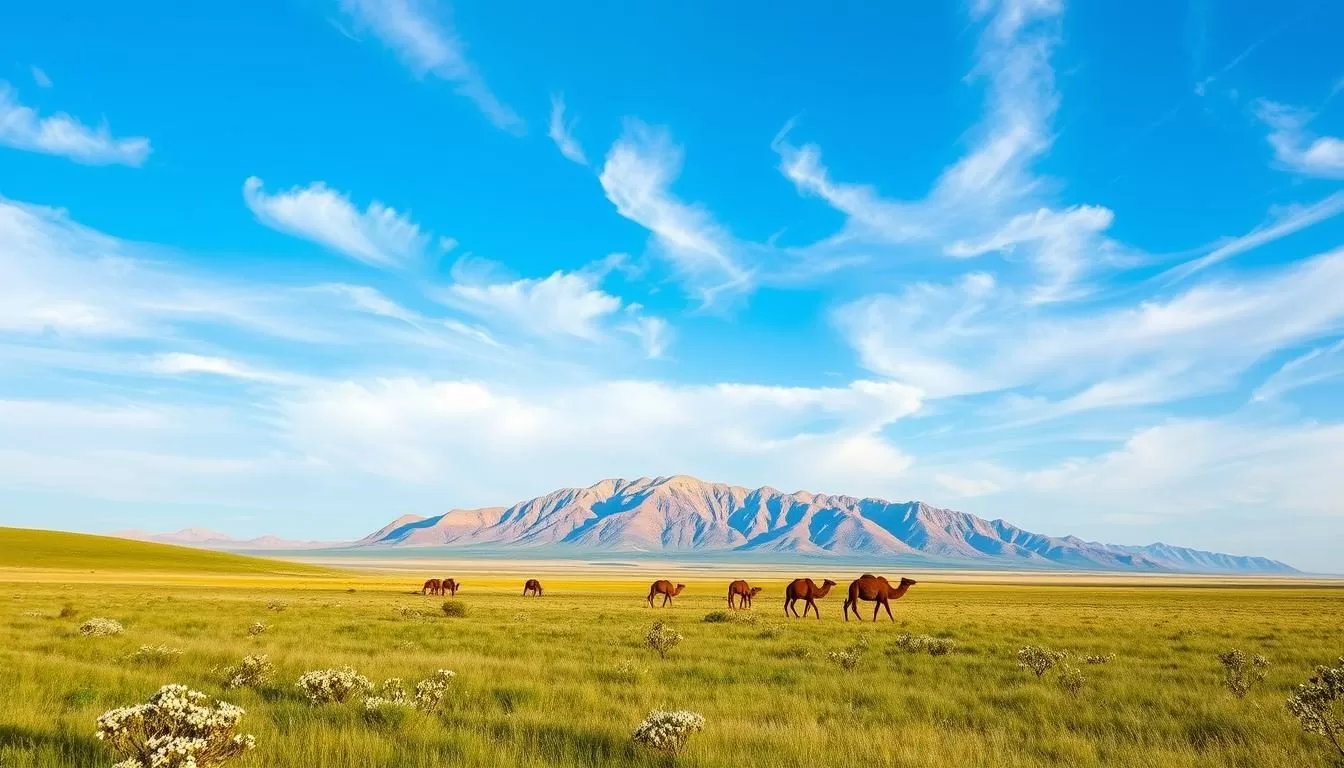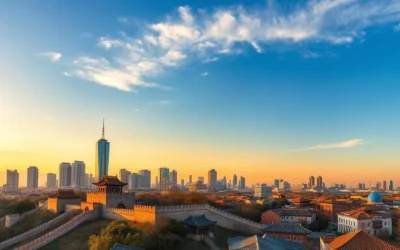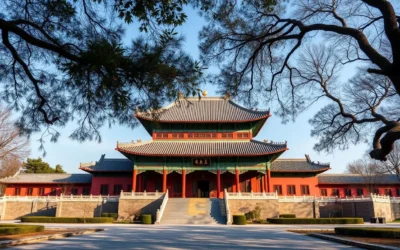✓ Accommodations✓ Flights✓ Rental Cars
Planning a trip to Inner Mongolia? Timing is everything. This vast area offers a unique blend of landscapes, from deserts to grasslands, each with its own weather patterns. Understanding the climate here is key to making the most of your journey.
The region experiences a continental climate, with temperatures ranging from -20°C (-4°F) in winter to 30°C (86°F) in summer. This means you’ll face drastic shifts between day and night, so packing smart is essential.
For the best experience, consider visiting between June and September. During this period, the weather is mild, and outdoor activities like hiking thrive. You’ll also enjoy over 2,800 hours of sunshine annually, making it ideal for exploration.
Whether you’re drawn to cultural festivals or the serene beauty of the grasslands, aligning your travel plans with the right season ensures a memorable adventure. Stay tuned as we dive deeper into what each season has to offer.
Understanding Inner Mongolia’s Climate Zones
Exploring the diverse climates of this region can make your trip unforgettable. The area is divided into two major zones: the lush grasslands in the east and the arid deserts in the west. Each zone offers unique experiences, shaped by its distinct weather patterns.

The Grassland Climate Zone (East Inner Mongolia)
The eastern part is known for its semi-humid climate. Winters here are cooler, with temperatures often dropping below freezing. Summers, however, are lush and green, perfect for outdoor activities like hiking. The Hulunbuir Grasslands are a prime example, offering breathtaking views and vibrant local festivals.
Average temperatures range from -10°C (14°F) in winter to 25°C (77°F) in summer. Rainfall is more frequent here, supporting the rich vegetation that defines this zone.
The Desert Climate Zone (West Inner Mongolia)
In contrast, the western region features a semi-arid desert climate. Spring can be stormy, with occasional sandstorms sweeping through the area. Summers are hot, with temperatures soaring above 30°C (86°F), while winters are harsh and dry.
The Alxa Desert Plateau is a highlight, showcasing the stark beauty of this zone. Despite the extreme conditions, it’s a fascinating place to explore, especially during autumn when temperatures are milder.
Understanding these climate zones is key to planning your visit. Whether you’re drawn to the vibrant grasslands or the rugged desert landscapes, tailoring your trip to the right season ensures a memorable experience.
Decoding Weather Patterns by Season
Unlock the secrets of the region’s ever-changing weather. Each season brings its own unique charm, from blooming grasslands to snowy wonderlands. Understanding these patterns ensures you’ll make the most of your visit.
Spring Renewal: Blossoms, Migrant Birds, and Occasional Sandstorms
Spring is a time of renewal, with vibrant blossoms and the return of migratory birds. However, it’s also the season for occasional sandstorms, especially in the western desert areas. Average temperatures range from 5°C (41°F) to 20°C (68°F), making it a great time for outdoor activities like hiking.
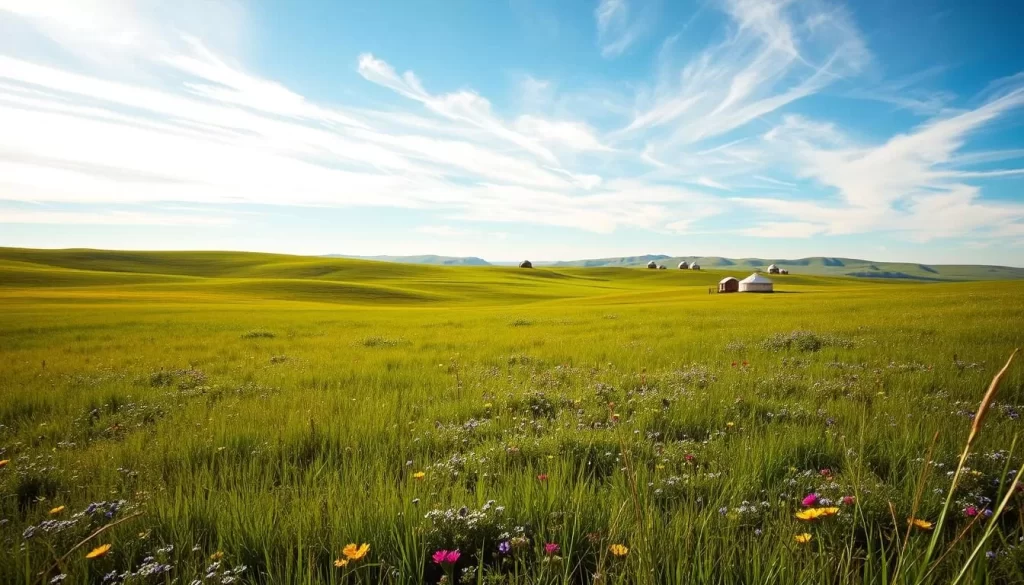
Summer Vibes: Comfortable Temperatures and Grassland Festivals
Summer offers comfortable temperatures, perfect for exploring the vast grasslands. With averages between 20°C (68°F) and 30°C (86°F), it’s an ideal time for festivals and outdoor tours. Don’t miss the chance to experience the lively culture and stunning landscapes.
Autumn Colors: Ideal Conditions for Desert Tours and Scenic Landscapes
Autumn paints the region in stunning colors, with mild temperatures ranging from 10°C (50°F) to 25°C (77°F). This is the best time for desert tours and forest hikes. The weather is stable, offering clear skies and breathtaking views.
Winter Wonderland: Embracing Snow, Ice Festivals, and Extreme Cold
Winter transforms the area into a snowy paradise, with temperatures dropping to -20°C (-4°F). Despite the cold, it’s a magical time to visit, with ice festivals and snow-covered landscapes. Bundle up and embrace the winter wonderland.
Inner Mongolia Autonomous Region, China: Best Months for a Weather-Savvy Trip
Choosing the right time to visit this area ensures you enjoy its natural beauty and cultural events to the fullest. Whether you’re drawn to the lush grasslands or the vast deserts, aligning your trip with the ideal season makes all the difference.
Recommended Timing for Grassland Tours and Naadam Festival Highlights
The grasslands are at their best from May to September. During this period, the weather is mild, with average temperatures ranging from 20°C (68°F) to 25°C (77°F). This is the perfect time for outdoor activities like hiking and horseback riding.
Don’t miss the Naadam Festival, held in July. This vibrant event showcases traditional sports like wrestling, archery, and horse racing. It’s a fantastic way to immerse yourself in local culture while enjoying the pleasant summer weather.
Optimal Periods for Desert Exploration and Mirage Viewing
For desert adventures, autumn is the best season. From September to October, temperatures are milder, ranging from 10°C (50°F) to 25°C (77°F). This makes it comfortable for exploring the vast desert landscapes and spotting mirages.
The western desert area offers unique experiences during this time. The cooler weather reduces the risk of sandstorms, allowing for uninterrupted exploration.
Pro Tip: Always check festival dates in advance, as they can vary slightly each year. Planning around these events ensures you don’t miss out on the highlights of your trip.
Planning Your Itinerary: Tours, Activities, and Packing Essentials
Crafting the perfect itinerary for your journey ensures you make the most of every moment. Whether you’re exploring the vast grasslands or the rugged deserts, aligning your plans with the season and weather is key. Here’s how to plan a trip that balances adventure and comfort.
Top Tour Recommendations
For a seamless experience, consider booking a guided Mongolia tour. These packages often include must-see attractions like the Hulunbuir Grasslands and the Alxa Desert Plateau. Guided tours also help you navigate the temperature shifts and extreme conditions in the area.
If you prefer a personalized approach, services like The WOW List connect you with expert planners who tailor your itinerary to your preferences. This ensures you don’t miss out on unique experiences, from local festivals to scenic hikes.
Seasonal Packing List and Preparation Tips
Packing smart is essential for any trip. Here’s a breakdown of what to bring based on the season:
- Summer: Lightweight clothing, sunscreen, and a reusable water bottle. Nights can be cool, so pack a light jacket.
- Spring: Layers are key. Bring a windproof jacket for occasional sandstorms and comfortable shoes for hiking.
- Autumn: Mild weather calls for long-sleeve shirts, a hat, and sturdy boots for desert exploration.
- Winter: Heavy coats, thermal layers, gloves, and a scarf are a must. Don’t forget insulated boots for snowy conditions.
Always check the weather forecast before your trip. Be prepared for sudden temperature changes, especially in the west where conditions can be unpredictable.

Pro Tip: Carry local currency for small purchases, as ATMs can be scarce in remote areas. For more insights on navigating the region, check out this detailed guide on Mongolia’s cultural and historical richness.
By planning ahead and packing wisely, you’ll be ready to embrace every adventure this unique destination has to offer.
Local Insights and Travel Recommendations
Discover the hidden gems of this vast region with local insights. From bustling cities to serene landscapes, there’s something for everyone. Let’s explore the best places to visit and tips to make your trip seamless.
Best Places to Visit: Hohhot, Hulunbuir, Ordos, and Beyond
Start your adventure in Hohhot, the cultural heart of the area. This city blends modernity with tradition, offering attractions like the Dazhao Temple and the Inner Mongolia Museum. It’s a great base to explore the surrounding grasslands.
For nature lovers, Hulunbuir is a must-see. Its sprawling grasslands and pristine lakes are perfect for hiking and photography. Don’t miss the chance to experience local nomadic culture here.
In Ordos, you’ll find a mix of history and innovation. Visit the Mausoleum of Genghis Khan or explore the modern Kangbashi District. This city offers a unique blend of old and new.
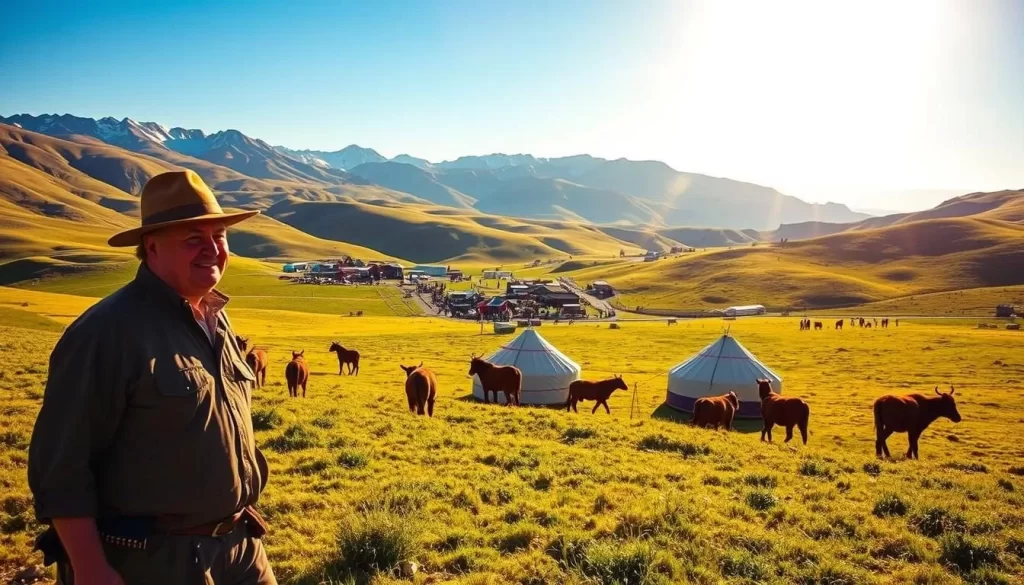
Insider Tips for Navigating Temperature Swings and Weather Challenges
The temperature in this area can vary drastically, so packing layers is key. In summer, lightweight clothing works well, but always carry a jacket for cooler evenings.
For desert excursions, bring sturdy shoes and sun protection. Autumn is ideal for these trips, as the weather is milder and sandstorms are less frequent.
Pro Tip: Check the forecast regularly and plan your activities around the weather. Local guides can provide valuable insights into the best times to explore specific areas.
For more detailed travel tips, check out this guide. It’s packed with practical advice to help you navigate this unique region. Ready to plan your trip? Let’s wrap up with some final thoughts in the next section.
Conclusion
Exploring this unique area offers unforgettable experiences, shaped by its diverse climate and landscapes. From the lush grasslands to the vast desert area, understanding the weather patterns is key to planning your trip. The best time to visit is during the summer, when temperatures are mild and outdoor activities thrive.
Seasonal changes bring distinct opportunities. Spring blooms and autumn colors are perfect for scenic tours, while winter transforms the area into a snowy wonderland. Each season offers something special, so aligning your travel plans with the right time ensures a memorable adventure.
Packing smart is essential. Layered clothing works best for the temperature swings, especially in the west. Don’t forget to check the forecast and plan your itinerary around local festivals and tours.
For more insights on the region’s history and culture, explore this detailed guide. Start your journey with confidence, knowing you’re prepared for every adventure this area has to offer.
The above is subject to change.
Check back often to TRAVEL.COM for the latest travel tips and deals.
